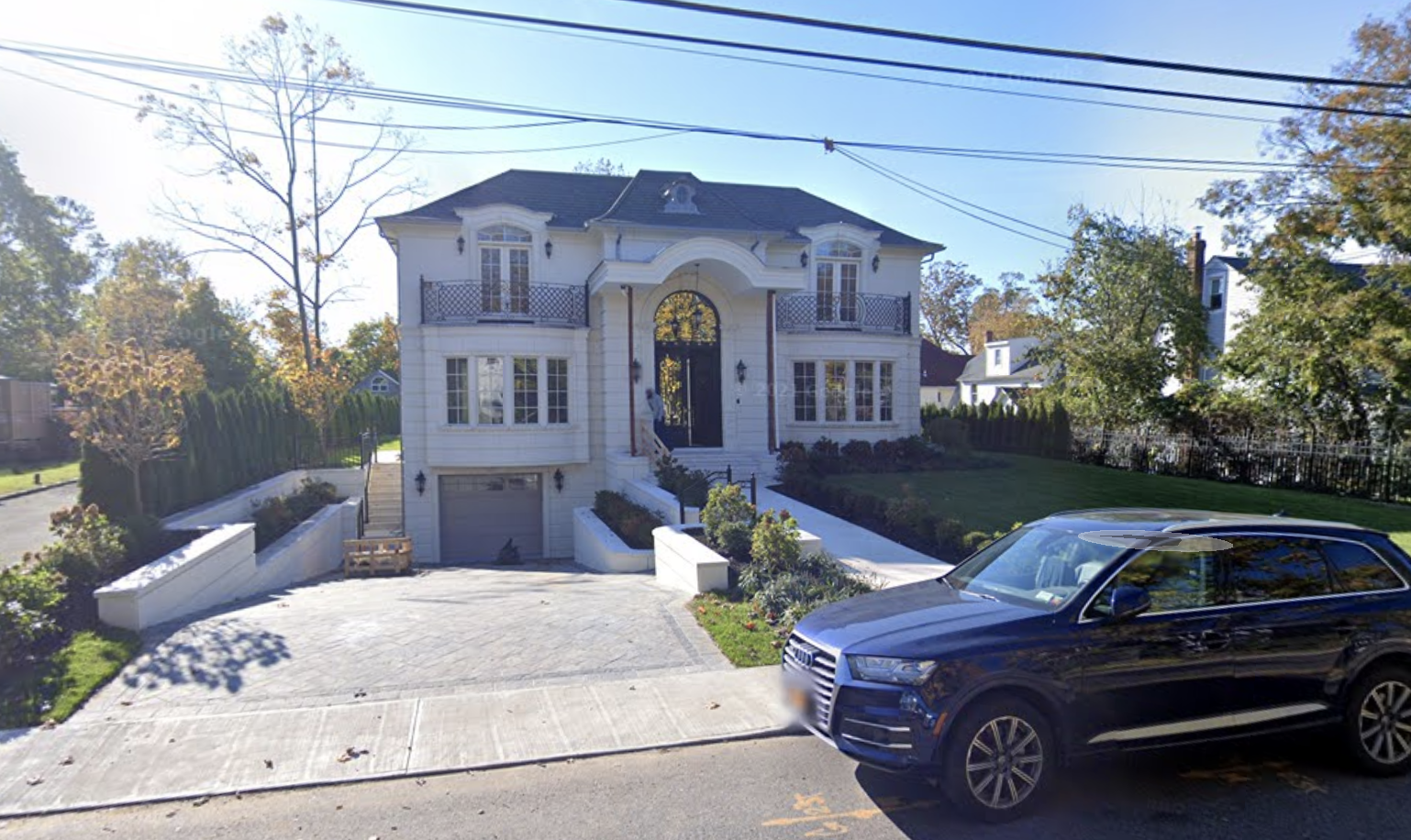The Village of Great Neck Zoning Board approved multiple variances for the premises at 136 Maple St. at a meeting on Thursday night. The board addressed issues with the property’s size and parking, as well as a cabana house and pool fence that were not in the approved plans.
The applicants who sought the variances, Joseph Rahmani and Ashley Khalili, were represented by attorney Andrew Filipazzi. Although the house’s dimensions and features were approved in 2018, Filipazzi said, a recent inspection brought up violations to village zoning codes that led the homeowners to seek variances.
The building’s parking was the primary issue discussed. The house, which is located in the Residence AA Zoning District, includes four bedrooms on the second floor, an office with a full bathroom on the first floor and a gym room and a computer room in the basement, which Filipazzi said was approved originally.
During the recent inspection, however, all of these rooms were defined as bedrooms. With a greater amount of bedrooms, the building is required by the village’s zoning code to provide six parking spaces, rather than the current four. The homeowners applied for a variance of two parking spaces as a result.
When a meeting attendee expressed confusion over how the rooms were classified, village Attorney Ken Gray explained that each room is primarily defined based on its size, not the homeowner’s stated intention for it.
“I can say one room is my wife’s shoe room, but if it fits the size requirements of a bedroom, that doesn’t matter. It’s a bedroom,” Gray said. “She may put every pair of shoes she has in there, but if that room has the dimensions of a bedroom by the village’s standards, that’s what it is.”
Filipazzi clarified that the homeowners accepted how the rooms were classified and sought the board’s approval for the variance regarding the parking spaces with that understanding. Great Neck resident Karen Barsdash voiced her support for the variance, pointing out that, while one of the Zoning Board’s main goals is to preserve and enhance the village’s appearance, the construction of a larger driveway on the property might accomplish the opposite effect. The board ultimately approved the parking variance.
The property’s backyard, featuring a pool, jacuzzi tub and cabana, also required multiple variances. While the village zoning code states that “no part of the pool, its deck or appurtenances shall be located less than 20 feet from any lot line of the premises or 40 feet from any residential building on any adjoining lot,” the jacuzzi tub on the south side of the pool is located 16.3 feet from the property line, necessitating a variance of 3.7 feet.
The cabana similarly challenged the zoning code’s requirements. The code specifies that “for single-family dwelling use, the building area shall not exceed 20% of the lot area.” The building lot area for 136 Maple St. is 22,500 square feet, so a maximum of 4,500 square feet of the lot can be covered. The total coverage of the house and attached rear patio is only 3,859.37 square feet, but the total coverage of the cabana with overhang is 1,307.12 square feet, bringing the total building area coverage to 5,166.49 square feet. As a result, the homeowners sought a variance of 666.49 square feet.
The applicants also requested a variance from the requirement that fences be made of “wood, composite materials that have the appearance of wood, metal picket fences, or such other material as may be approved by the Board of Trustees or the Committee of Architectural Review on a case-by-case basis.” A four-foot-high estate-style fence was previously approved, but a four-foot-high chain-link fence was installed ultimately.
Filipazzi argued that none of the features that require variances cause any hazard or affect the appearance of the surrounding neighborhood.
“The jacuzzi, cabana and fence – these are all in the backyard, far from the street, private, so nobody would see them walking by,” he said. “Basically, they do no harm, aesthetically or otherwise, so the homeowners would like the board’s approval to keep things the way they’ve had them done.”
Attendees were able to share questions and concerns, with many agreeing that the code violations were minor. After briefly deliberating, the board voted to approve all of the variances.



